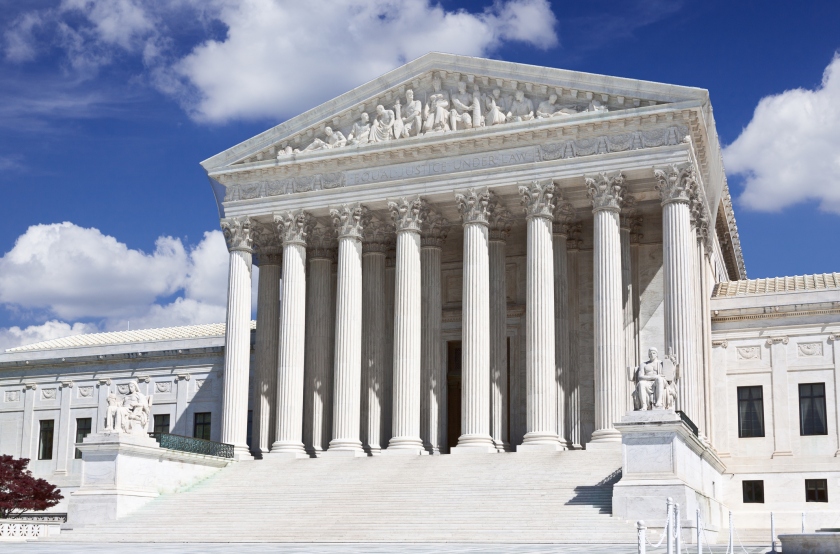
Two years ago, in the case of Obergefell v. Hodges, the U.S. Supreme Court ruled that same-sex couples have a constitutional right to marriage, thereby striking down laws in several states banning same-sex marriage. In dissent, Justice Antonin Scalia argued that the majority had acted undemocratically:
“Until the courts put a stop to it, public debate over same-sex marriage displayed American democracy at its best. Individuals on both sides of the issue passionately, but respectfully, attempted to persuade their fellow citizens to accept their views. Americans considered the arguments and put the question to a vote. The electorates of 11 States, either directly or through their representatives, chose to expand the traditional definition of marriage. Many more decided not to. Win or lose, advocates for both sides continued pressing their cases, secure in the knowledge that an electoral loss can be negated by a later electoral win. That is exactly how our system of government is supposed to work.”
Scalia’s critique fits squarely within a long tradition of judicial and scholarly concern over the counter-majoritarian difficulty: the potential problem that arises from giving unelected and life-tenured federal judges the power to invalidate legislation passed by elected (and thus accountable) politicians. His criticism also implicates the role of judges in a system of federalism, where federal courts have the power to evaluate and strike down both federal and state legislation. How, then, should we evaluate the exercise of judicial review given the realities of judicial power in a system of federalism?
In my paper “Judicial Federalism and Representation,” presented at the 2016 Annual Meeting of the MPSA, I answer this question by examining the role of federal floors in shaping policy representation at the state level. What is a federal floor? Via their interpretation of the U.S. Constitution, federal judges can establish a minimum level of constitutional protection that states must provide to their residents, below which no state can lawfully set policy. The combination of federalism and judicial review of state statutes means that the actions of federal judges and state legislatures are inherently tied together. As a result, with the introduction of federal floors, federal courts can mediate the relationship between state policy and state-level public opinion.
To help understand this process, in the paper I develop a framework that is based on models of the effect of federal mandates on policy choices, when policy is a function of choices made at both the state and federal levels. In my framework, a federal court can unilaterally establish a federal floor in a given policy area—for example, how much protection does the Constitution provide for women to obtain an abortion without interference from states? This floor thus establishes a minimum level of protection that states must provide.
I use the framework to recast the counter-majoritarian difficulty as an issue of federalism, as it allows for precise decisions of when a decision is in fact counter-majoritarian. Specifically, I develop versions both with and without scenarios in which the status quo at the state level may lag behind changes in public opinion, and with and without the presence of cross-state moral externalities, in which voters care about policies not just in their states but in all states. I then show that the existence of lagging status quos or cross-state externalities is a necessary condition for a decision to be classified as pro-majoritarian. In the presence of externalities, the implementation of a federal floor benefits voters who prefer higher levels of constitutional protection, due to the positive externalities of states in “low protection” states being forced to shift their policies. Conversely, a floor harms voters who prefer lower levels of protection, since they suffer both immediate policy losses and negative externalities from other states shifting their policies to accommodate a federal court’s mandate. Comparing net beneficiaries to net losers from the mandate allows for a classification of whether a given decision is pro- or counter-majoritarian.
Since last year’s conference, I have split the original paper into two separate papers that examine different empirical implications of the judicial review and federalism framework. In one paper, I present a quantitative analysis of the path to the legalization of same-sex marriage in all 50 states, which was in large part caused by federal courts finding a constitutional right to gay marriage (state legislatures and courts also shifted policy in many states). I show that in a majority of states, federal courts actually brought policy in line with opinion majorities, due to the fact the legal status quo lagged behind the change in public support for gay marriage. Thus, these decisions were pro-majoritarian. Combined with the existence of cross-state moral externalities, in which pro-same-sex marriage citizens in benefitted from laws in other states being changed, these results strongly mitigate the force of Scalia’s counter-majoritarian critique in Obergefell.
At the same time, the invalidation of state laws will not always result in furthering the connection between state-level public opinion and policy. In the second paper, I examine abortion policy in the decades after the Supreme Court established the right to an abortion in 1973 in Roe v. Wade. Examining public opinion, judicial rulings, and state policy related to seven types of abortion restrictions (such as parental consent and waiting periods), I show that these restrictions have been broadly popular. Because the Supreme Court has shifted its doctrine over time to allow states to implement more abortion restrictions, these levels of opinion mean that there has been less congruence between state-level policy and state-level opinion in periods where the Court deemed these restrictions to be unconstitutional.
Taken together, these papers show that effect of judicial review and judicial decision on state-level representation is ambiguous. The power of courts in the United States is such that the actions of judges can have both representation-enhancing and representation-reducing effects. As judicial review is a mainstay in American democracy, evaluating this question requires careful analysis of the contexts in which courts are acting.

About the Author: Jonathan Kastellec is an assistant professor in the Department of Politics at Princeton University. His research “Judicial Federalism and Representation” was awarded the Pi Sigma Alpha Award for the best paper presented at the 2016 MPSA conference.
